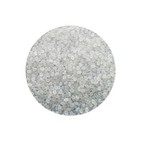Polypropylene is a polymer obtained by addition polymerization of propylene. It is a white waxy material with a transparent and light appearance. The chemical formula is (C3H6)n, the density is 0.89~0.91g/cm3, [1] It is flammable, the melting point is 189°C, and it softens at about 155°C. The operating temperature range is -30~140°C [2] . It is resistant to corrosion by acid, alkali, salt solution and various organic solvents below 80 °C, and can be decomposed under high temperature and oxidation. Polypropylene is widely used in the production of clothing, blankets and other fiber products, medical equipment, automobiles, bicycles, parts, transportation pipelines, chemical containers, etc., and also used in food and drug packaging
Polypropylene, abbreviated as PP, is a colorless, odorless, non-toxic, translucent solid substance. Polypropylene is a thermoplastic synthetic resin with excellent properties, which is a colorless and translucent thermoplastic lightweight general-purpose plastic. It has chemical resistance, heat resistance, electrical insulation, high-strength mechanical properties and good high wear-resistant processing properties, etc., which makes polypropylene rapidly used in machinery, automobiles, electronic appliances, construction, textiles, packaging since its inception. It has been widely developed and applied in many fields such as agriculture, forestry, fishery and food industry. [4] In recent years, with the rapid development of my country's packaging, electronics, automobile and other industries, it has greatly promoted the development of my country's industry. [5] And because of its plasticity, polypropylene materials are gradually replacing wood products, and high strength, toughness and high wear resistance have gradually replaced the mechanical functions of metals. In addition, polypropylene has good grafting and compounding functions, and has huge application space in concrete, textile, packaging and agriculture, forestry and fishery. [6]
Mice were given 1 to 5 times by gavage at a dose of 8g/kg, which did not cause obvious poisoning symptoms. Rats inhaled the decomposition products of polypropylene heated to 210-220 ℃ 30 times, each time for 2 hours, and the symptoms of eye mucous membrane and upper respiratory tract irritation occurred. Similar to polyethylene, it is forbidden to use its recycled products to contain food.




